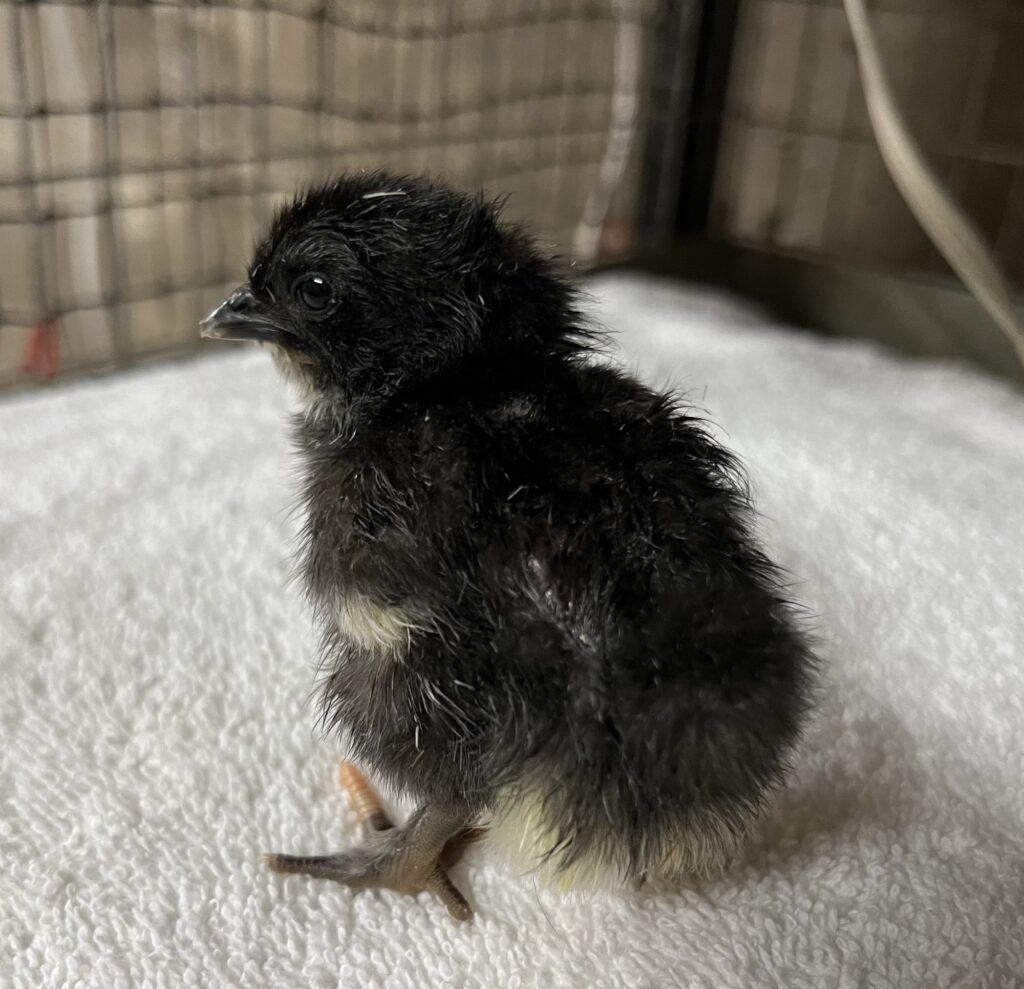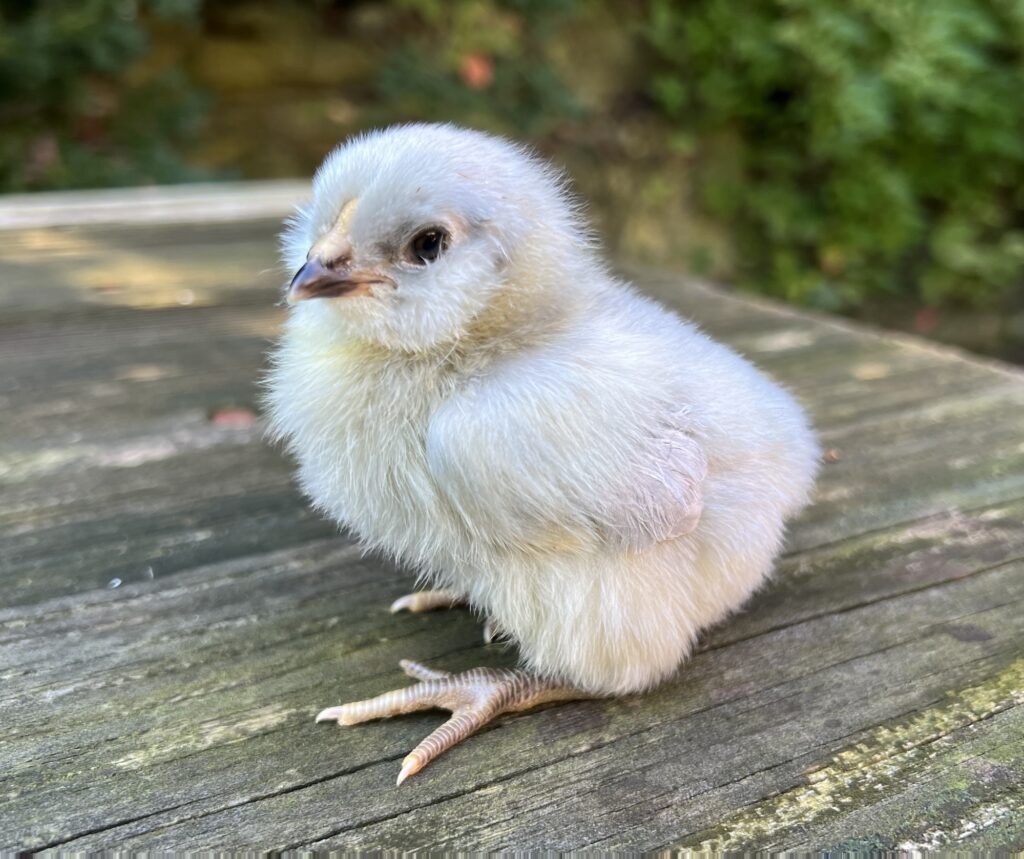
Just because goose laying season ends doesn’t mean hatching season is over. The chickens are still laying, and the incubators are languishing…so why not set some eggs? With at least a couple of months of mild (or even warm) temperatures, it’s a great time to raise littles in time to lay their first eggs next spring!
Though I have hatched many eggs since we started the farm, it truly never gets old. Each time is a unique experience, sometimes with unexpected problems to be resolved. And, each time, there are dirty hatchers to be cleaned and disinfected afterward.
This time, I set French Black Copper Marans, first generation (F1) Olive Eggers, and Lavender Ameraucanas. After a recent change of rooster in our BCM flock – a younger rooster with better conformation was chosen – I wanted to ensure that fertility hadn’t been affected. Fortunately, fertility was good and multiple eggs made it to lockdown. Very dark eggs like these have, historically, been more difficult to hatch than lighter-shelled eggs, but the depth of egg color is an important criteria for our flock goals, so I chose the eggs that were truly the “cream of the crop” (for this point in the laying cycle – the ladies are going into molt, so the egg color is lighter than earlier in the year).

Our F1 Olive Eggers are the offspring of our main flock BCM rooster and Buff Easter Egger hens. The chicks tend to be very mellow, even friendly, and the pullets lay a variety of olive shades. Cockerels grow to a good size, rivaling Black Copper Marans, and are generally well-behaved. Since these birds are a cross between two breeds, they have the benefit of “hybrid vigor”, thanks to their diverse gene pool. This typically means that they’re very healthy chicks with excellent survival rates. Plus, they’re really cute – some have modified pea combs and muffs/beards!

Perhaps the most exciting part of this hatch was that we’ve finally been able to expand our Lavender Ameraucana flock, with the addition of six newly-hatched chicks. It’s been slow going, as I described in other posts, because the multiple sets of shipped eggs I ordered and incubated only resulted in 2 chicks that survived, both solo hatchers (another solo chick hatched but died shortly after). Lykke, our pullet, is younger than Lars (cockerel, the first solo hatcher), so it took time for her to reach the age and size where they could be put together. Lars was apparently a bit shy at first, too, because Lykke’s eggs were, disappointingly, infertile for some time. With time and maturity, he apparently overcame that issue, and we finally cracked an egg open one day to find that it was fertile! Long story short, I was finally able to set some of her eggs and 7 chicks hatched.

A couple were late hatchers and needed some TLC, but they seem to be growing well and holding their own with the other chicks in the brooder now. Sadly, 4 days after hatch, I found one of the largest, (seemingly) healthiest, Lavender Ameraucana chicks dead. There were no obvious clues as to what had happened, its vent was clear, it had been active and behaving normally prior to its demise. It was under the MHP (Mama Heating Pad), as if asleep, and wasn’t crushed. After all of the hatches I’ve been involved with, I have to conclude that sometimes these deaths are attributable to causes that don’t manifest until the chick has exhausted its yolk nutrition and has to change over to eating and drinking – if there is an internal issue, it may not be observable, but could be unsurvivable for the chick. It’s always a blow to lose a chick for unknown reasons, and it makes you feel a little paranoid about the others. Fortunately, the other chicks, including the late hatchers who struggled initially, seem to be doing well.

Some of the Olive Egger and Black Copper Marans chicks have already gone to their new homes, and will hopefully have long and happy lives there. Sometimes, people who have acquired poultry from us will send updates, like a photo of the chicks settling in, or of the first egg a pullet lays. We love these kind of updates! Less uplifting are the updates that birds were lost to predators (or even possibly stolen). It can be difficult to know that the chicks (or goslings) you worked hard to ensure would have a good start in life end up having their lives cut short, often due to lack of experience or knowledge. I try to offer resources so that people who new to raising poultry can educate themselves on how to properly raise and protect their birds, but the adage “you can lead a horse to water, but you can’t make him drink” rings with truth.

The remaining Olive Egger and Black Copper Marans chicks will likely eventually move to new homes, too, but I’m consoled by keeping the Lavender Ameraucana. Lykke has, unfortunately, decided to take a lengthy break from laying, so I was only able to set a few more that should be hatching in a couple of days. I just hope she’s molting and will resume laying again…soon!
